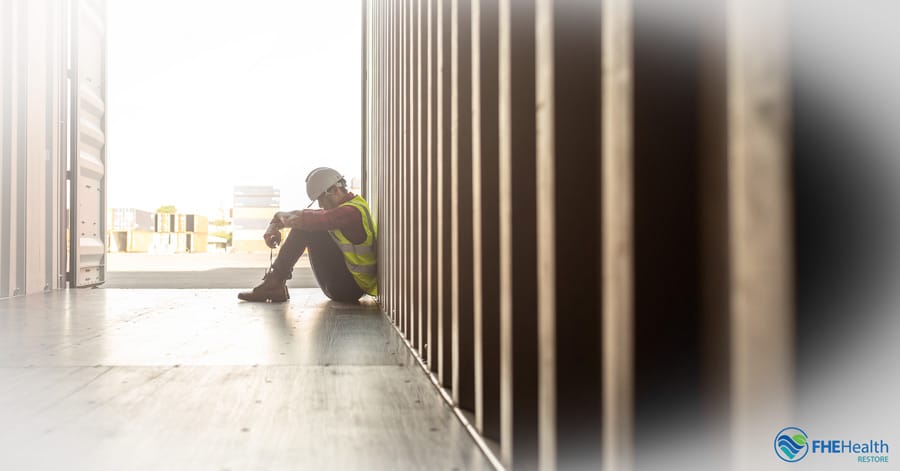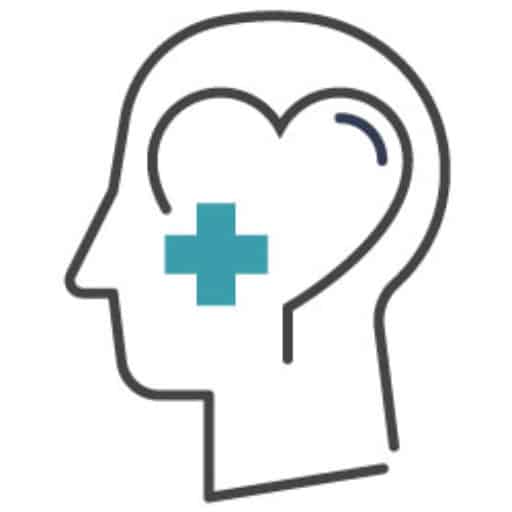The link between PTSD and social anxiety is undeniable, and many people living with post-traumatic stress disorder (PTSD) isolate themselves as a result. If you have a loved one who has been diagnosed with PTSD and notice signs of social withdrawal, it’s important to understand how to approach them about this sensitive topic and ways to support them through their experience.
Living with someone with PTSD or C-PTSD (complex PTSD) provides insight into their social activity and makes it easier to identify signs of isolation quickly.
Understanding Why Your Loved One Is Self-Isolating
Why do people with PTSD isolate themselves from society? Social withdrawal is common in this disorder for a variety of reasons. Understanding why your loved one is seeking solitude when they typically would not can help you approach them in a compassionate way and encourage them to seek treatment. In many cases, their self-isolation may not be a conscious decision.
People with PTSD may socially isolate themselves for a number of reasons, one of which is to avoid a negative response to their behavior. Symptoms of PTSD can include:
- Irritability/angry outbursts
- Being on the lookout for potential threats
- Self-destructive behaviors
- Being easily frightened or startled
These behaviors can elicit negative reactions from others, which may motivate people with PTSD to remove themselves from social situations. A desire to avoid these sorts of interactions, stemming from social anxiety, is a primary motivator for people with PTSD to self-isolate.
They may also gravitate toward solitude because it is easier than having to constantly explain themselves to others. Explaining an emotional reaction or mood that is characteristic of PTSD may complicate social interactions for your loved one, causing them to prefer spending time alone.
How Self-Isolation Benefits People With PTSD (in Their Eyes)
For people with C-PTSD, the world is often full of potential triggers that can bring on memories of past trauma and cause the individual to relive those moments in the present. To avoid being triggered and develop a relative feeling of safety, people with C-PTSD may isolate themselves from the outside world, preferring to stay in a comfortable environment, like their home, alone.
To empathize with your loved one’s experience with PTSD, it’s important to consider why they view self-isolation as preferable to social interaction. To your loved with PTSD, the benefits of seclusion may appear to be:
- Fewer potential triggers
- A peaceful environment
- A way to take back control of their life by preventing unwanted events
- A chance to rest because they are exhausted from constantly anticipating a negative emotional reaction
Remember that, in many cases, your loved one likely isn’t making a conscious decision to self-isolate. It’s more likely a culmination of many small choices they make to skip social events or not answer a phone call that ultimately leads them to a state of total isolation.
The Risks of Social Isolation Due to PTSD
Although self-isolation can initially be comforting to someone with PTSD because it minimizes potential triggers, it’s not a healthy state to live in. Your loved one is at risk of developing further mental health issues as a result of prolonged solitude.
Prolonged isolation can result in:
- Anxiety
- Depression
- Reduced immune function
- Sleepiness
Loneliness has also been proven to result in a 40% increased risk of developing dementia.
The Cycle of Isolation
The Cycle of Isolation is used to explain various stages of isolation in individuals with PTSD. The three phases of the cycle are:
- hyperarousal
- intrusion
- constriction
Each phase of the cycle refers to the feelings and experiences the person has when isolating. In the hyperarousal stage, the individual is alert and guarded. They may overreact to situations as a result of their high level of tension. The intrusion stage is when the person experiences unwanted thoughts; they may be reliving their traumatic experience over and over again in their mind. In the constriction stage, the person feels numb inside and may lose their sense of self.
In all of these stages, the individual is inclined to isolate themselves from social settings — but for a different reason in each phase.
Ways to Support a Loved One With PTSD and Social Anxiety
Seeing your loved one isolate themselves due to PTSD can be a challenging experience, and you may not instinctively know how you can help them. It’s critical to be intentional about how you approach the topic of seeking professional help or offering support to someone with PTSD. Their natural reaction to these advances may be negative, and it could push them further away from you if they do not feel like they are truly understood.
To avoid triggering your loved one with attempts to “fix” their behavior, approach the situation as a supportive listener. Always take things at the pace your loved one is comfortable with, and don’t push them to seek help before they are ready to do so. Here are a few ways you can be a loving, supportive figure in their lives without making them feel attacked or overwhelmed.
- Be intentional about when and where you talk: Don’t spring a conversation about their behavior or disorder on your loved one at a random moment, especially not during a heated discussion. Respect the fact that they are isolating to create a calm and peaceful environment; help maintain that safety by selecting a comfortable and safe space, like their home, to talk to them without distractions. Be sure to listen to anything they choose to share with you. Don’t tell them you understand what they’re going through; instead accept that their experience is unique and do your best to learn about it from them.
- Don’t push them: If the conversation becomes tense or you can sense that your loved one is starting to become triggered by what you’re saying, be the one who takes a step back so they don’t have to. Respect their reaction and don’t guilt them or shame them for it. Be willing to take a break and revisit the topic at another time.
- Take suicidal ideation seriously: If your loved one shares with you that they are having suicidal thoughts, respond swiftly but calmly. Help is available through the National Suicide Prevention Lifeline or through the assistance of a trained mental health professional.
Encourage Your Loved One to Seek Help
These avoidance symptoms are common in people with PTSD, but with a thoughtful approach, you can help your loved one seek treatment. At Restore in South Florida, we have a team of professional counselors on standby 24/7 to take your call. Contact us today to see how we can help your loved one with PTSD develop a treatment plan that meets their needs.



